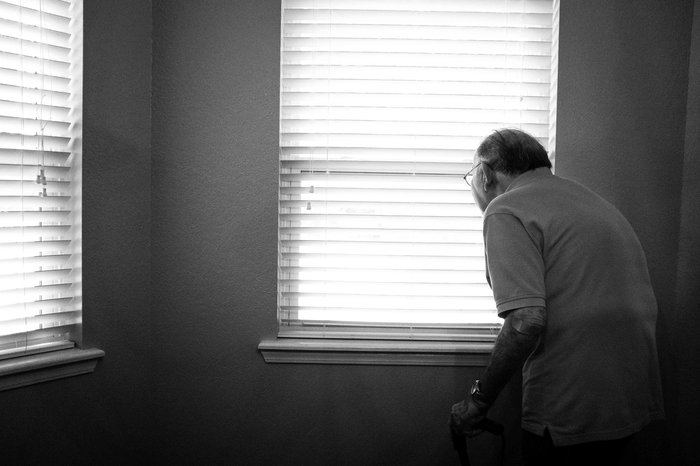Problem to be solved
Like any care setting, residential homes are always looking for safer ways of working that will improve outcomes for their residents. One area for improvement is how homes check on their residents at night.
The traditional approach is for care workers to go into residents’ rooms several times during the night to check up on their condition. Not only does this disturb residents’ sleep, but it also risks missing signs at other points during the night that would trigger concern and action if a care worker had observed them.
The project
With support from an NHS Digital Pathfinder grant, Friends of the Elderly has been working with Allycare and KareInn to link acoustic monitoring with electronic care planning in its care homes, and develop a new way of working at night which relies on safely responding to alerts rather than going into residents’ rooms and disturbing their sleep.
Acoustic monitoring
This pilot project has involved installing Allycare’s wireless-enabled acoustic monitoring device in residents’ rooms with their explicit consent. The AI capability powering this device filters out background noise unrelated to the person’s activity, works out their activity profile based on sounds they make, and then classifies and interprets sounds according to whether they are normal or abnormal for that person. As a result, the device can identify night time events such as unusual movement or calling for help, and raise an alert to staff.
Integration with electronic care management
These alerts are integrated with KareInn’s electronic care management system. This system is the repository for all recorded data and care planning about a resident, from pre-admission stage through to end of care or discharge.
The data covers a holistic picture of the resident, including:
- medical history and changes to their dependency
- health and wellbeing trends, such as pain management, infections, falls and vital signs
- levels of day-to-day engagement in mealtimes, socialising and organised activities
Data is kept up-to-date because care workers record observations in realtime on mobile devices.
The system can therefore provide context to a night time alert, such as identifying possible reasons for why someone is getting up more than usual at night based on what happened during the day. This is particularly helpful when staff on the night time shift are different to those who cared for the resident during the day, reducing reliance on handovers. With this intelligence, the system recommends actions to staff for responding to the alerts.
Impact
Between launch in September 2019 and June 2020, the three care homes comprising 90 registered beds, that have participated in the pilot have experienced a 55% reduction in night time falls and a 20% reduction in hospital admissions, compared to the previous nine months. This is at the same time as a 75% reduction in the number of unnecessary physical night time checks conducted by staff, freeing their time to the equivalent of approximately £13,000 per staff member per year for other care planning and support activities.
Even where a care escalation or hospital admission is required, the outcome for a resident is likely to be better where the technology has picked up on a concern immediately. For example, in one of Friends of the Elderly’s dementia care homes in Malvern, a night staff team was alerted to a resident who was in distress. Acting immediately, the team called for an ambulance. It transpired that the resident had suffered a cardiac arrest. With prompt treatment in hospital, the resident made a full recovery and returned to the home two days later.
The manager of the care home in Malvern commented that:
As well as the benefits to care outcomes and staff satisfaction, Friends of the Elderly has experienced improved conversion rates on new enquiries about its homes - boosted by awareness of this project.
Project extension
The plan is to launch in 5 further homes by the end of 2020, meaning that the project will cover approximately 400 registered beds.
The project scope has also usefully expanded in the context of COVID-19 to cover daytime monitoring. Allycare’s AI technology now automatically tracks coughing fits to help identify symptomatic residents early. This enables staff to safely isolate residents as appropriate, reduce the risk of transmission in the home and mitigate the commercial risk of lower occupancy. Where residents are isolating, staff can avoid unnecessary contact by using the acoustic monitoring solution during the day.
Lessons learned
An unexpected technical integration issue arose in cases where residents living together as partners shared a room: how to attribute acoustic data to the two people separately? This was resolved with adjustments to the AI model and by aligning alerts with care notes made for the respective residents.
The biggest challenge for this project has been supporting staff to make the large cultural shift from checking on residents in person to trusting the technology and using the system to check on them remotely. For those care workers accustomed to more traditional ways of working, this was initially a difficult transition. Ongoing support and monitoring has helped them adjust, to the extent that their experience has opened up the possibilities of them using more technology in other parts of their life too. To find out more about this project, go to Allycares


